This post may contain affiliate links. Please read our disclosure for more info.
You often hear about athletes practicing yoga to warm up before an intense workout, but I find that yoga can be an intense workout on its own, which led me to wonder whether I should warm up before settling into my mat for my yoga practice. So I did a little digging!
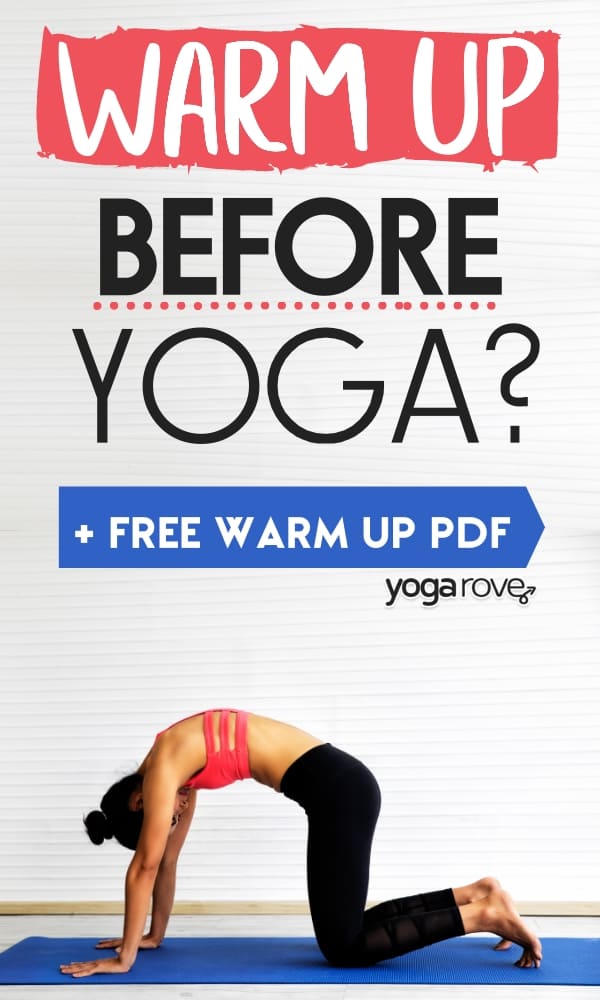
So, should you warm up before yoga? Yes, you should always warm up before yoga! Before you start your yoga session, your muscles may be cold and stiff, which could lead to injury if you jump right into your practice.
Warming up your muscles maximizes blood flow and prepares your joints for movement, increasing the benefits of your practice and reducing your likelihood of injury. Warming up before your practice also allows you to renew your awareness of your body and connect with your breath.
How long should you warm up before doing yoga?
A good rule of thumb is to warm up between 5 to 15 minutes, until your skin is warm to touch and you can feel your heart beat starting to elevate. The goal of your warm up is to slowly elevate your heart rate – slowly being the key word here – and connect with your body.
Exactly how long you need to warm up depends on the intensity of your practice and the state of your body at that moment. Ask yourself these three questions to determine how much of a warm up your need:
1. Have I been active or still today?
If you’ve been sitting at a desk or in a classroom all day, your muscles are likely cold and stiff from the lack of movement whereas a person who spends their day on their feet or walks to yoga class may already have warmer and more pliable muscles at the start of their practice.
2. How intensely am I going to practice?
The more intense the practice, the more of a warm up you’ll need. If you go into your practice with cold muscles and jump right into Malasana (a yogi squat), you are risking injury. Spend time in gentler poses first, connecting with your breath and your body before transitioning into more difficult poses or practices.
3. Will a warm up already be incorporated into my class?
If you are taking a class online or in a studio, your teacher will most likely incorporate a warm up into the class, but listen to your own body to determine whether that is enough. I know my body takes a long time to warm up so walking to class and practicing a few Downward Dogs first helps get my blood flowing before the warm up portion of the class even begins.
But isn’t yoga a warm up itself?
There are some gentle yoga poses, which we’ll discuss further along in this article, that can be used to warm up your body, but yoga is so much more.
Yoga is an ancient practice that incorporates stretching, strengthening, balance, breath to movement, and mindfulness. Yoga poses not only strengthen and stretch your muscles, but they also require concentration and a mind-body connection that promotes mindfulness and healthy behaviors in all parts of your life.
Yoga poses push you physically and mentally so your body – and your mind – need to be ready in order to really appreciate and receive your practice.
What is the best way to warm up for yoga?
There are many different ways you can warm up before yoga and a couple different factors go into it. Below we’ll explain basic poses you can do, as well as what type of stretching or exercises can help you warm up before your yoga practice.
Simple Seated Yoga Warm Up
Below is a quick seated warm up anyone of any level practice can try. This quick sequence is perfect for waking up your body and preparing it for whatever you practice will bring.
1. Easy Pose
Easy Pose is one of the first yoga poses you learn in yoga. Sitting in this pose even for just a few moments helps prepare your mind and help you get grounded in the present moment to prepare for you practice.
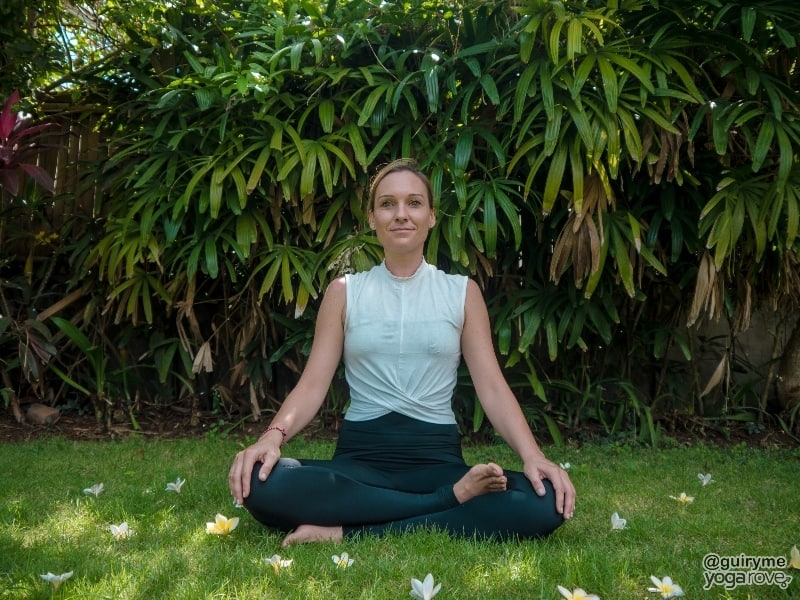
How to do Easy Pose:
- Start in a seated position with legs out in front of you, then comfortably cross them at any distance that is comfortable for you.
- Make sure to sit with a tall spine, and to place a block or blanket underneath your seat if you need additional support.
- Place you hands on your knees or at your heart and close your eyes or bring your gaze to a fixed point.
- Take 3-5 cleaning deep breaths.
2. Easy Seated Twist
Twists are great for warming up the spine and increasing circulation throughout the body. This is a very mild twist that you can control the deepness of based on you level and comfort.
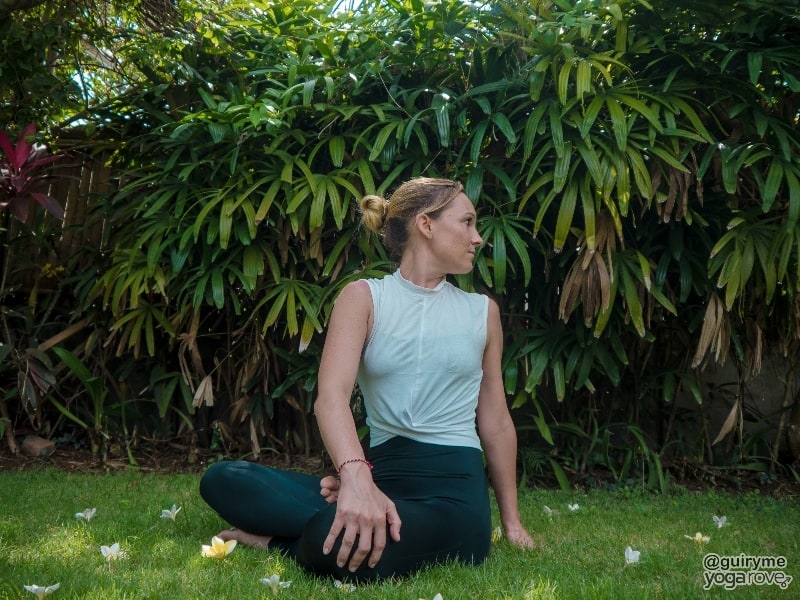
How to do Easy Seated Twist:
- From Easy Pose, place your left hand slightly behind your left hip and place your right hand on your left knee.
- Gently and slowly twist to your left, bringing your gaze over your left shoulder. Continue to lift through your chest and keep a straight spine.
- Stay here for 3-5 breaths and repeat on the other side.
3. Cat-Cow
Cat-Cow is a great flow to warm up your spine and your core, which can stiffen throughout the day, especially if you sit a lot.
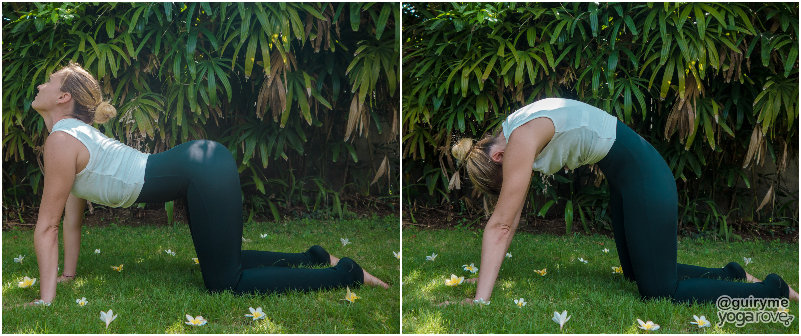
How to do Cat-Cow:
- Start on your hands and knees with your knees under your hips and your hands under your shoulders
- With a flat back and your eyes looking a few inches in front of your hands, slowly begin to arch your back and bring your chin towards your chest (this is the cat portion)
- Move through the posture slowly bringing your head up and your core down so that your back is curved downward (this is the cow portion)
Move back and forth in these postures, connecting your breath to your movements. This is also a great pose to do throughout the day to maintain mindfulness and keep your spine healthy.
4. Cat-Cow Crunch
This is a variation of the traditional cat-cow flow to bring a little bit of heat to your body and wake up the core.
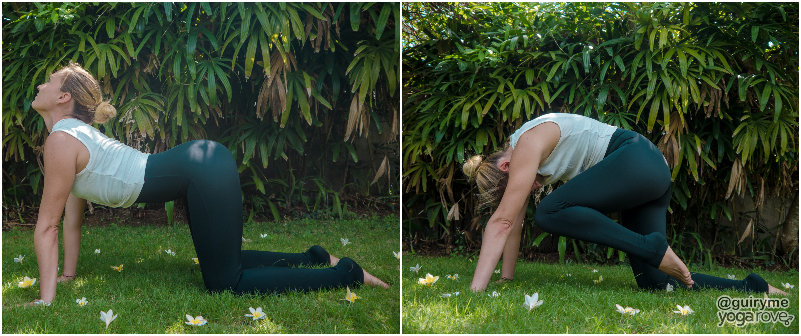
How to do Cat-Crunch:
- From Cat-Cow, come back to a neutral spine for a few breaths.
- On your next inhale, come into Cow Pose.
- Then on your next exhale as you are coming into your Cat Pose, bend your right need and crunch it in towards your nose and hold for the duration on your breath.
- As you come back to come pose, lower the leg back to the ground.
- Continue for a few rounds, then repeat sides by switching legs.
5. Leg Extension to Cat Crunch
This is another add onto the the flowing sequence of Cat-Cow. This will not only increase your circulation, but will also give your glutes a good stretch and further engage your core.
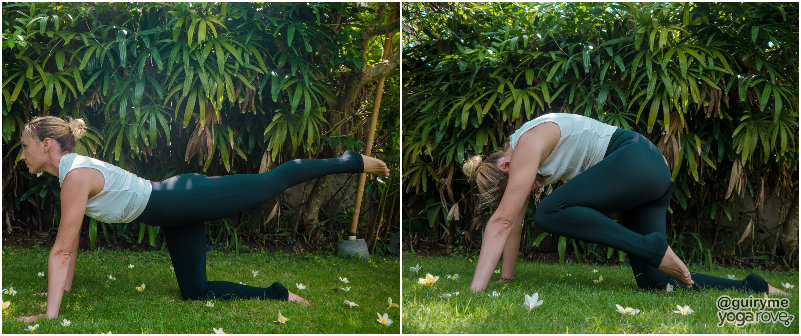
How to do Leg Extension to Cat Crunch:
- From your Cat Crunch, on your next inhale, instead of coming into Cow Pose, lift your leg and extend it out straight behind you.
- Engage your core to keep a neutral spine and point through your toes.
- On your exhale, come back into Cat Crunch. Repeat 3 to 5 rounds, then switch to the other side.
6. Child’s Pose
Child’s pose is a fantastic way to connect with your body and your breath before you begin your practice.
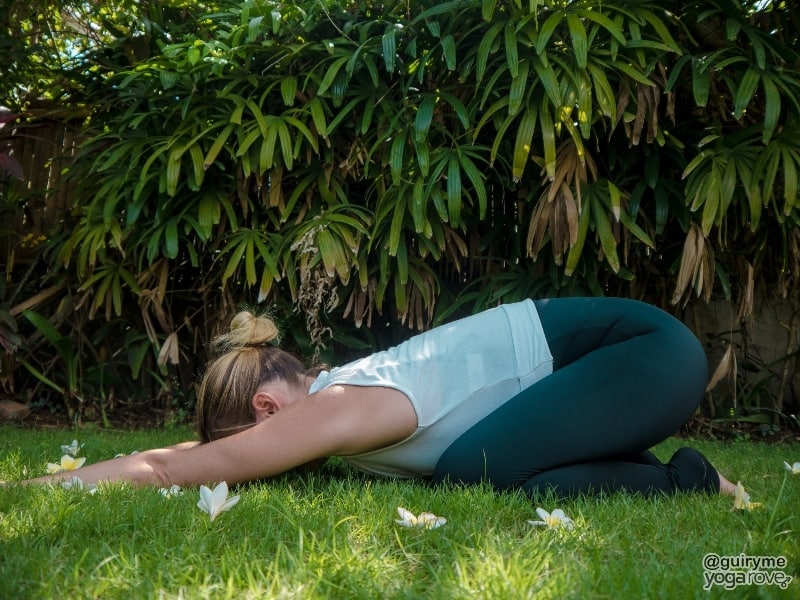
How to do Child’s Pose:
- Start with your knees mat distance apart and bring your toes to touch
- Sink your hips back towards your heels
- Stretch your arms forward and begin to bring your forehead towards your mat
- Breath deeply and enjoy the moment
If this is difficult or you are feeling extra stiff, slowly rock forward and backward to bring blood flow to your muscles.
Dynamic vs. Static Stretching
Not all stretching is created equal. Holding a stretch is best saved for your post-workout recovery, but stretching with gentle movement can be a great way to warm up your muscles and connect with your body. Yoga practitioner Dr. Melissa West has a good description here about the differences between dynamic stretching and static stretching.
- Dynamic stretching includes movement-actions like swaying side to side while you are in a forward bend or peddling your legs in a Downward Dog. Dynamic stretching is generally regarded as the best type of stretching warm up to do before a workout as it is less intense on your cold muscles.
- Static stretching is stretching without movement, so in yoga this would include holding a pose such as a pigeon pose (a personal favorite of mine after a long run) or a seated forward fold. Static stretching is generally considered the best form of stretching after a workout when your muscles are warm and need to be stretched out after doing a lot of work.
Moderate Exercise
The goal of your warm up is to slowly and naturally awaken your muscles. Moderate movement and light exercise for 5-10 minutes before your yoga practice is a great way to accomplish this. Here are three of my favorite ways to wake up my body before I begin my practice:
- Walking is a full body, low intensity exercise that slowly increases your heart rate
- Climbing stairs, perfect if the yoga studio is on the second or third floor, will start pumping blood and oxygen to your muscles to prepare you for your practice
- Jumping jacks require you to move your upper and lower body – and be aware of all your limbs – increasing your heart rate and your connection to your movements
Related Questions
Do you need to warm up before stretching? Just like yoga or any form of stress on your muscles, you should always warm up before static stretching (holding a stretch without any movement). Stretching cold muscles can increase the likelihood of injury and impact your performance. Plus, it doesn’t feel very good!
Is yoga a good cool down? Yoga is a great cool down. It allows your heart rate to come down slowly and naturally lengthens muscles that have just undergone an intense workout. Just 10-15 minutes of yoga after an intense workout can reduce that dreaded next-day soreness.
Yoga also connects you to your body in a way other workouts don’t so you’re more mindful of areas of your body that may be particularly sore or possibly overworked after your workout.
Related Post: Should I Do Yoga Before or After Cardio?
Should I stretch after yoga?
Yes! Yoga uses your muscles in ways you may not be used to, which can cause soreness in the days following your practice. Gentle stretching that moves your body through a full range of motion can help decrease that soreness and allows your muscles to recover and rebuild safely.
Yoga can be incorporated into your lives in so many ways, whether it becomes your main form of exercise, the way you calm your busy mind, or how you keep your muscles healthy as part of other physical training. Warming up before yoga will ensure that you can continue your yoga practice injury-free for many years to come.
Alicia is a communications consultant who specializes in content strategy for mission-driven organizations. She is training for her first Boston Marathon and practices yoga weekly as part of her training.



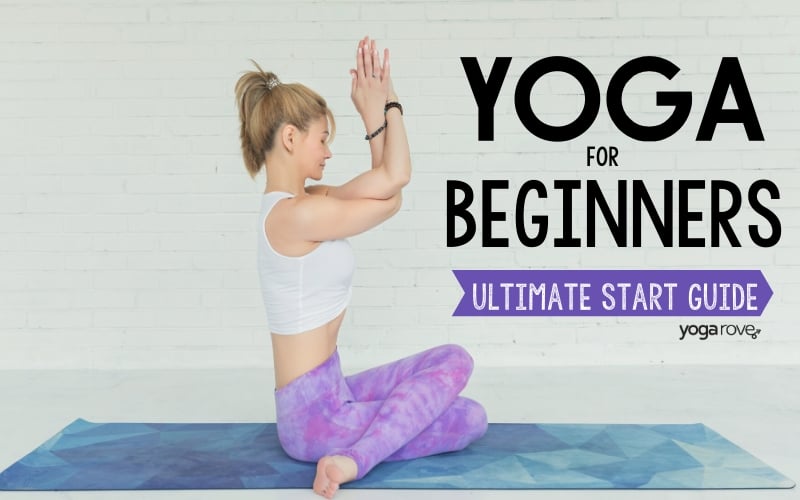


Great article!!
Thank you Felicia! I’m glad you found it helpful 🙂
Great article. I’ve found very helpful to bring to my students the importance and relevance of different types of stretching.
Awesome, glad you found it helpful Gina!
Thanks